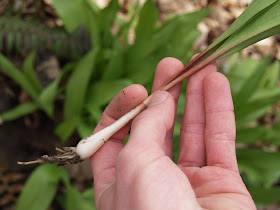By Chris Siciliano
A version of the following post is scheduled to appear in the May, 2011 issue of Recoil Magazine.
“Soft on the palate, with subtle undertones of blackberries.” To walk in on the above conversation mid-sentence, you would think Kurt Stauffer was not describing coffee, but rather his favorite bottle of wine or, more likely, this being Michigan, a new summer beer from Shorts, Bells, or New Holland Brewing. The fact is, Stauffer, expert coffee roaster and owner of ROWSTER New American Coffee, was describing his popular Burundi roast, and doing so with such delicious-sounding descriptors that all within ear-shot began to salivate like Pavlov’s dog.
Stauffer’s enthusiasm for good, let’s call it
craft coffee, is matched only by Stephen Curtis’, sitting vice-president of Rowster and barista extraordinaire. One small-batch, custom roast at a time, these two are doing for coffee what others have been doing for craft beer for the last twenty-five years: reminding us that drinking and eating too need not be purely utilitarian activities, but can (and should?) be moments of complete transcendence and, for some, the culmination of years of study, obsession, and fervent attention to detail. Like the brewers at Founders, the bakers at Nantucket, the chefs at Winchester and Vivant, like any number of craft-anything pioneers across the city, state, and country, the guys at Rowster are hell-bent on achieving mastery in their chosen field, which, in this case – and lucky for us – just happens to be coffee.
Lucky too that Rowster moved recently from their original back-room location on Cherry into a spacious storefront in the up-and-coming Wealthy St. business district. It used to be you could only buy Rowster coffee by the pound for at-home consumption. Now, thanks to the new larger space, you can enjoy it by the cup as well. Just be sure to have a few extra minutes when you go. Rowster sets out no self-serve carafes to expedite service, nor do they have an honor jar for customers who don’t have time to wait. These things, though sensible, even appreciated in other coffee houses, would be completely out of place at Rowster, where each cup of coffee is brewed individually, to-order, and not until the customer asks for it. The decision to put quality above all else, including convenience, might sound like utter sacrilege to those who subscribe to the prevailing fast-food sensibilities of our time, but Stauffer and Curtis would have it no other way.

The single-cup, “clever coffee” brewing system employed by Rowster has several advantages. Nothing if not efficient, it delivers just about the smoothest, most well-balanced coffee you can find. It also ensures quality by virtue of freshness. (Like most things, coffee degrades the longer it sits around, not a problem at Rowster.) Again, the goal is not speed, but rather the enjoyment of delicate, naturally fruity flavor compounds otherwise locked within the coffee grounds. By catering exclusively to taste Rowster stays true to their governing philosophy: done correctly, a good cup coffee can (and should) be so much more than merely a vehicle for caffeine or sugar. It can be a culinary experience no less thought-provoking than a rare Belgian beer, yet no less accessible than, well, a cup of good coffee.
This philosophy informs not just their brewing process, but the roasting operation as well. Instead of over-manipulating the raw or “green” coffee bean to achieve some pre-determined end, Rowster uses the tools available to highlight and tease out the implicit character of the bean itself. It’s their opinion that exceptional coffee, like good wine, comes from careful production practices, sure, but more so from terroir – that is, the environmental factors in which the bean was grown. The region, the variety, the processing, the weather, these variables matter as much if not more than what Stauffer and Curtis can do on roasting day. In a sense, the guys do their best simply to get out of the way, letting the natural complexity and potential of the bean lead them where it will.
This is not to say they don’t have their own style. In the same way a microbrewery or winery or even a restaurant strives to establish a defining or overarching flavor profile, Rowster too strives to cultivate a unique identity across every roast in their bullpen. Their coffee, no matter the variety, tends to be on the lighter side, bright with sparkling acidity; this as opposed to the heavy-bodied, chewy coffees available from other roasters, which are no better or worse, just different. Stauffer likes to think of his roasts as “over-achievers”, coffee that pleases with balance and subtlety rather than boldness and brutish intensity.
In any case, it’s coffee worth checking out, by the pound or by the cup, both options are available. Espresso, cappuccino, and other drinks are available as well.
ROWSTER New American Coffee is located at 632 Wealthy Street SE, two blocks west of Eastern.
 |
| Kurt |
 |
| Steve |
 |
| The real star of the show |
















